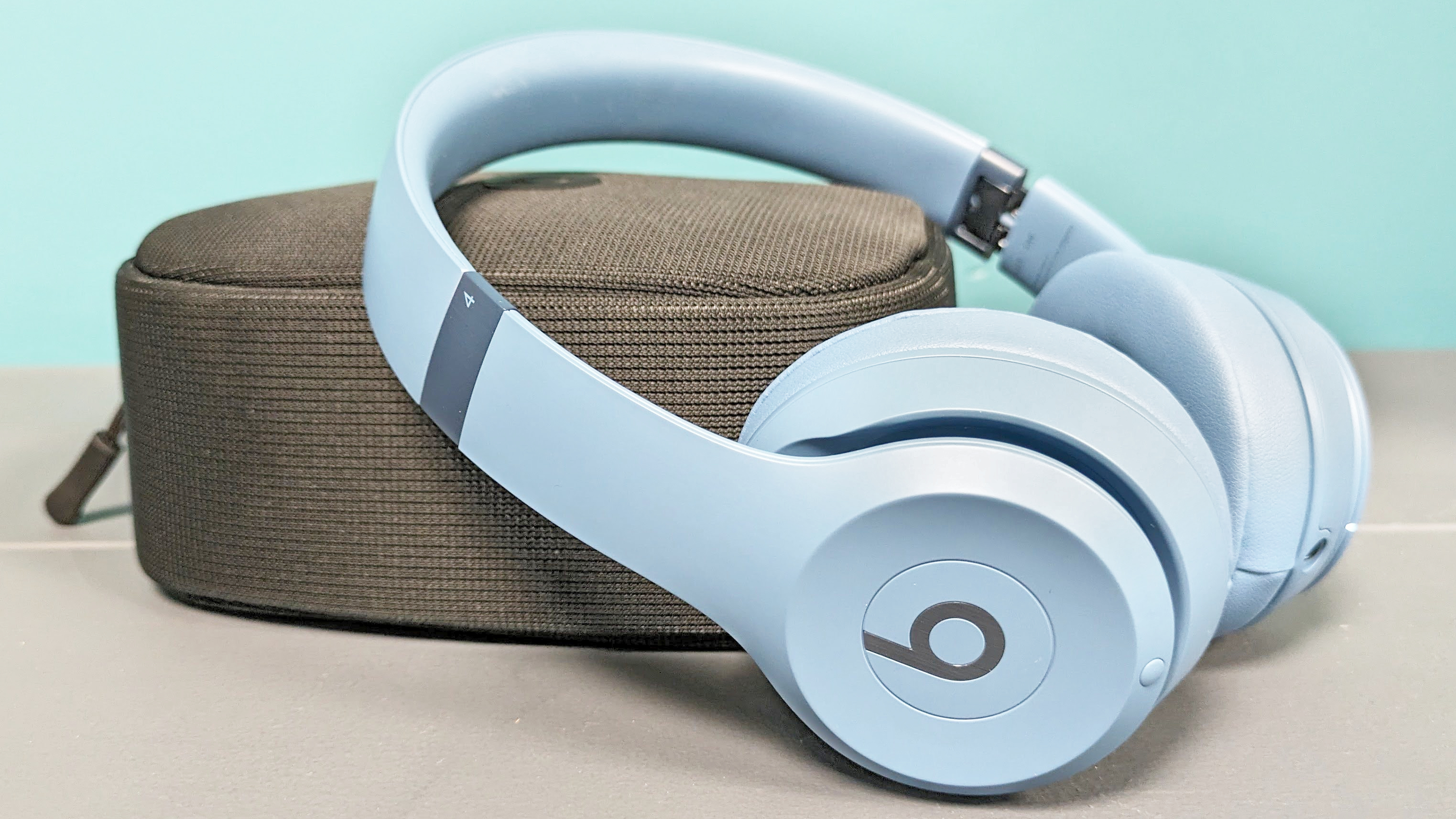
Beats Solo 4: Two-minute review
The Beats Solo 4 are long-awaited on-ear wireless headphones that aim to improve on the company's 2016 Solo 3 with an increased battery life and additional features, including a USB-C port for simultaneous charging and lossless hi-res audio playback, and Spatial Audio – as well as some new color options.
When wearing the Beats Solo 4, I was pleasantly surprised at how well isolated I was from my immediate environment, despite the lack of active noise cancellation (ANC). The claimed 50-hour battery appeared to hold true during my tests too, which is great for such comparatively small and light headphones.
As with most of the best Beats headphones, style is at the forefront, and the Slate Blue variant I tested certainly makes a statement (they are also available in Matte Black and Cloud Pink). Some parts of the plastic build and headband padding feel cheap, though, and certain aspects of its engineering, such as the folding mechanism, don’t inspire much confidence.
They offer a secure fit that’s impressively solid for on-ear headphones, withstanding the rigors of physical activity without shifting, which is important considering that Beats is promoting these headphones for exercise. However, on-ear headphones don’t really work for my ear comfort, and these did nothing to change that – and long-term comfort is made worse by the lack of adequate padding on the headband; I couldn’t use them for more than an hour at a time.
The controls also provide issues: the main 'b' button is easy to accidentally press when hanging Solo 4 around the neck, and I found the volume buttons hard to locate while wearing. Pressing them also puts undue pressure onto the ears, which, as you can imagine, is an uncomfortable sensation.
The sound is perhaps the most disappointing aspect of the Solo 4. The bass response can be impactful at times but wooly at others, while the mids sound muddy and lack punch compared to more of the best wireless headphones at the same price. These problems aren’t solved if you listen via any of the higher-quality wired options. The upper mids are where the Solo 4 sound their best, but the highest frequencies don’t have enough sparkle and clarity in comparison to the competition.
The Sony ULT Wear WH-ULT900N, for example, are the same price in the US (and cheaper in the UK), and beat the Solo 4 on pretty much all fronts: they have much better sound, comfort levels, and come with ANC. The Sennheiser Accentum Plus is another superb option for those who want something more audiophile-friendly, with impressive ANC and wireless hi-res support.
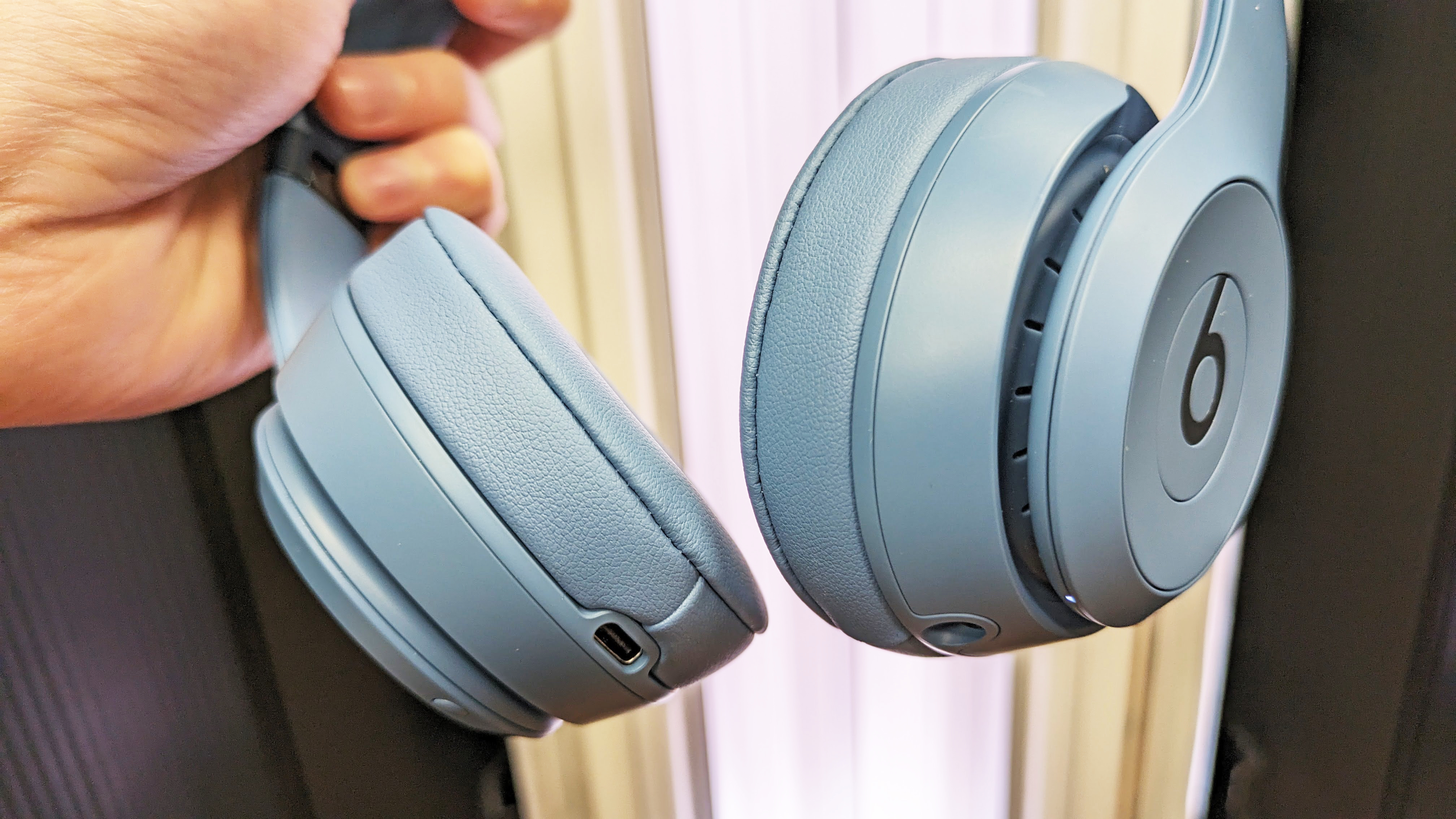
Beats Solo 4 review: Price & release date
- Priced $199 / £199 / AU$329
- Launched in May 2024
- Available in Matte Black, Slate Blue and Cloud Pink
The Beats Solo 4 are priced at $199 / £199 / AU$329 officially, and were available to buy from May 2nd, 2024.
This is lower than today's flagship headphones – the Beats Studio Pro are $349 / £349, while the Sony WH-1000XM5 officially cost $349 / £299. Both of these are larger, over-ear models with ANC.
For basically the same price as the Solo 4, you could also get the Sony ULT Wear WH-ULT900N or the Sennheiser Accentum Plus. Both of these are over-ear rather than on-ear, which usually improves low-end frequency response, and feature ANC and some other features lacking here. The Sennheiser headphones also match the Solo 4’s 50-hour battery, even with ANC on.
Beats Solo 4 review: Specs
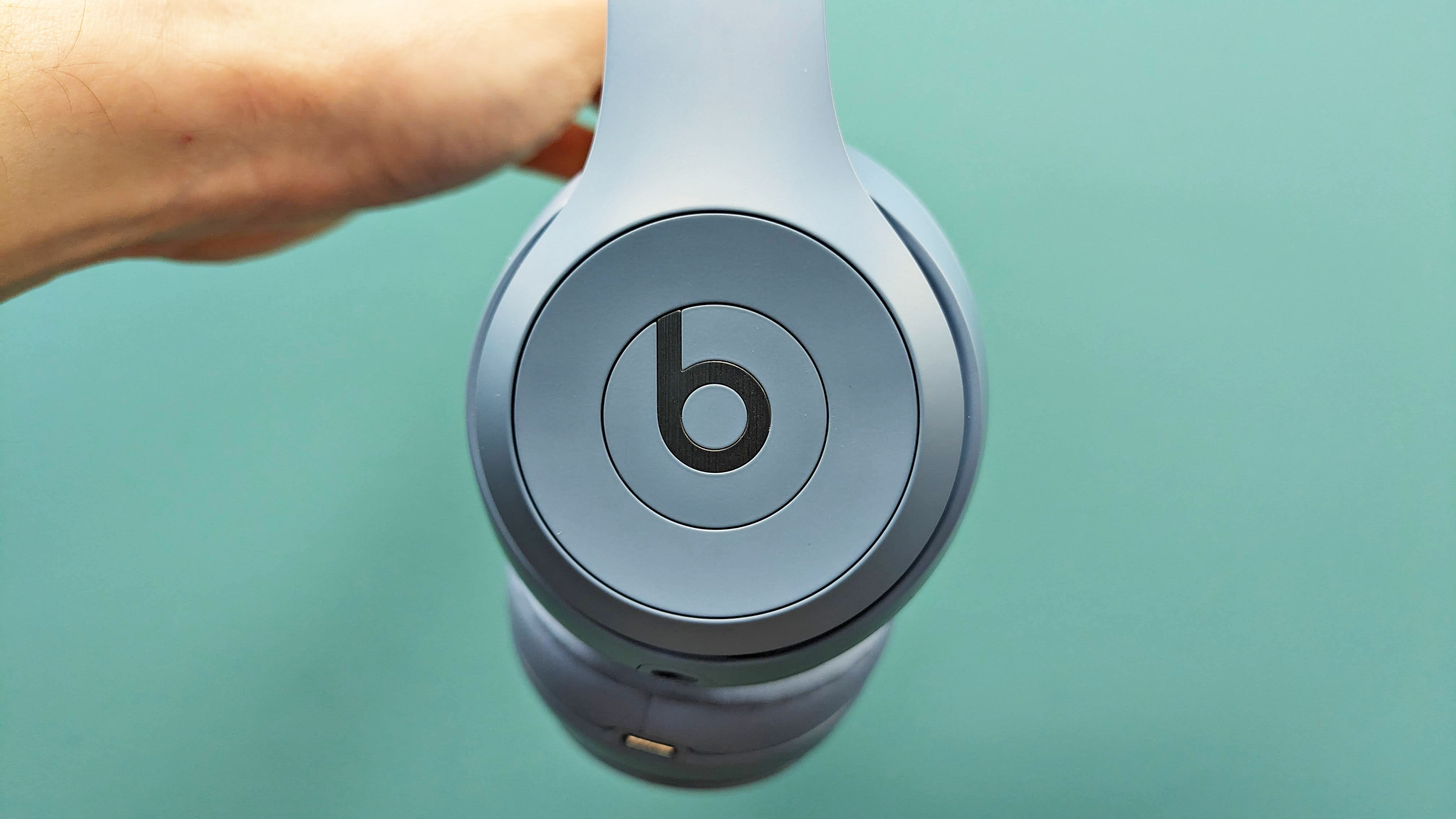
Beats Solo 4 review: Features
- Apple and Android smart features
- Lossless wired playback via 3.5mm and USB-C
- No active noise cancellation
The feature set for the Beats Solo 4 is what you would expect from a modern pair of wireless headphones. One-touch Bluetooth connectivity made it easy for me to connect to Android, iPhone and Windows PCs, and lossless audio playback is supported via a wired USB-C connection. This means you can listen to sources that provide superior quality to MP3 or AAC file formats, imparting more detail across the entire frequency range, theoretically. Simultaneous charging is also possible when connected to devices that provide power.
However, there is no high-resolution audio support when connected via Bluetooth, as the Beats Solo 4 only support AAC and SBC wirelessly, which are both compressed formats; there’s no aptX or LDAC.
There is also a 3.5mm analog input and included cable so you can use them just like a traditional pair of wired headphones, meaning you can enjoy unlimited playback without using any battery power. Again, this can offer higher-quality audio than Bluetooth, and is useful on planes.
The Beats app is responsive, easy to use, and offers options to easily manage privacy controls, such as location permission, notifications and analytics, and battery optimization settings. It also provides the battery level as a percentage that actually updates for all 100 numbers, which is very useful (and not something all headphones provide – some just note when they've dropped by 20%, for example).
There's fast pairing and auto-switching between compatible devices for both iOS and Android ecosystems – and the Find My system for both platforms in supported. However, Apple users get a few extra features, such as hands-free 'Hey Siri' access and Audio Sharing, which lets users share playback with multiple pairs of AirPods or Beats headphones at a time. Better than these, though, is that Apple users get Personalized Spatial Audio for movies or Dolby Atmos music. There’s no support for this on Android.
I mentioned auto-switching between devices above, but be warned that this only worth within the Apple or Android systems. So, it auto-switches between iPhone and Mac; or it switches between Android and Chromebook. There's no standard multi-point pairing, so you can't switch between, say, an Android phone and Windows laptop seamlessly.
True to their minimalist aesthetic, the Beat Solo 4 headphones only have four buttons, and all of them are pretty well hidden. The main 'b' button is on the left hand side and integrated with the company logo, and controls main functions, such as play/pause and skip track, depending on the number of times it is pressed. The button is tactile and operates smoothly, although I did find it easy to press accidentally, especially when they’re hung around the neck.
The volume controls are located on the ring around the 'b' button, with the top half increasing volume and the bottom decreasing. Again, these function well, but they require too much force to register, which meant I was pressing the entire left driver into the side of my head, which isn't comfortable.
The power button is perhaps the most hidden of all, being a tiny little dot finished in the same color as the rest of the headphones. Locating this blindly when wearing the Solo 4 isn’t easy. It also has to be held down for a few seconds, but hold for too long, and you enter pairing mode. Getting the timing right is tricky, and the only audio prompt you get is when the Bluetooth connection is established. The only indication that the Solo 4 are turned on is a small LED on the outside. Basically, make sure you turn them on before they're on your head.
The microphone is also high quality, although perhaps too eager to pick up extraneous noises. When making a test call with the Solo 4, my interlocutor commented that, although I was coming through clearly and loudly despite the considerable amount of wind outside, other background noises also came through prominently, such as people talking around me in the street.
Beats quotes the battery life as being a generous 50 hours of playback. And during my test, this figure seemed to live up to reality.
I tracked them as generally losing around 5% battery per 2.5 hours (without Spatial Audio turned on), which puts them right in line for the 50-hour claims from Beats. I also observed them drop around 10% after a 6.5 hours of playback too, so you may get a little over 50 hours – but as usual with headphones, it can depend on volume and other factors.
- Features score: 4/5
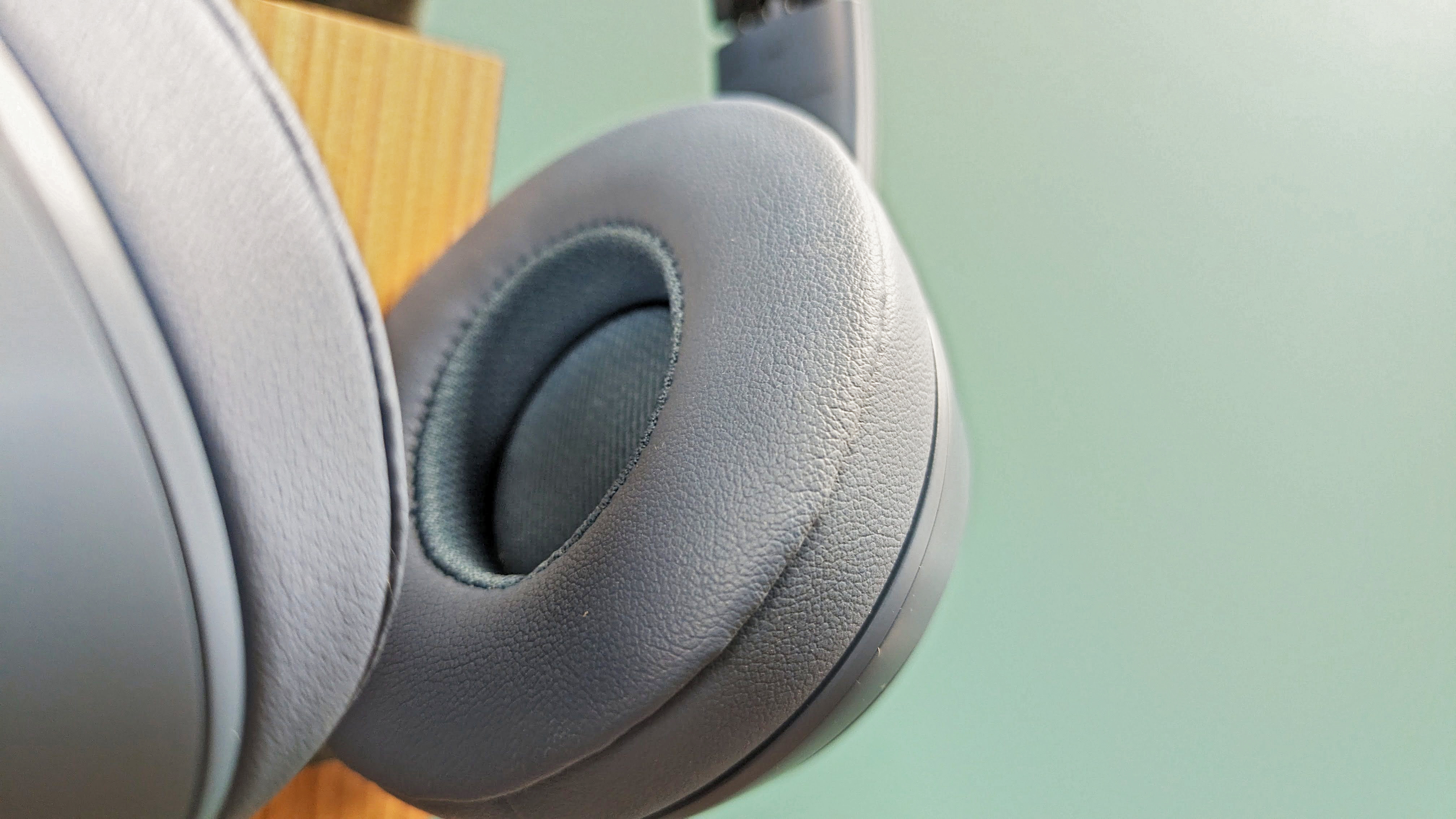
Beats Solo 4 review: Sound quality
- Bass is hit-and-miss
- Boxy lower mids, clear upper mids
- Great passive noise isolation
Despite Beats having a reputation for bass-heavy headphones, the Solo 4 are pretty controlled on this front. The low frequencies are deep without being overbearing, although they don’t have the precision and control I would hope for. There are times when the bass is too boomy and wooly, especially noticeable in songs with sustained low notes.
The lower mids are also disappointingly muddy, but the upper mids are pleasantly crisp without being harsh. Songs with detailed percussive arrangements, for instance, come across well in the Solo 4. But the highest frequencies don’t sparkle as much as they could, lacking the finer details at the top end of the spectrum.
When connected via USB-C rather than Bluetooth, you get access to lossless audio, which, in theory at least, should provide a listening experience fit for audiophiles. During my audio test via USB-C with our special TechRadar playlist on Tidal – which provides lossless music streaming – the results weren’t radically different to Bluetooth. The bass was still amiss, and while the mids were more punchy, they still weren’t as clear as I would have liked. Using the 3.5mm analog input seemed to marginally improve the quality of these frequencies, but not by much.
In comparison to the Sony ULT Wear headphones and Sennheiser Accentum Wireless that I've already mentioned in this review, there's no competition really – these both offer more detail, a better balance across the frequencies, and a clearly richer experience overall.
Where the Solo 4 shine, though, is the noise isolation. Despite not having any active noise cancellation profiles, external sounds are blocked out well. This helps songs with heavy reverb and a strong sense of space to be comprehensively conveyed. Spatial Audio experiences are also improved by the isolation, making the illusion of the surround sound theater experience more compelling. The dynamic head tracking meant that whichever way I turned my head, even slightly, the audio panned to always match the direction of the source.
At this price, it’s hard to get a better movie sound experience on headphones than Apple's Spatial Audio tech provides. This is a nice bonus if you'll watch a lot of movies, but really still has limited appeal for those who will only listen to music with them.
- Sound quality score: 3/5
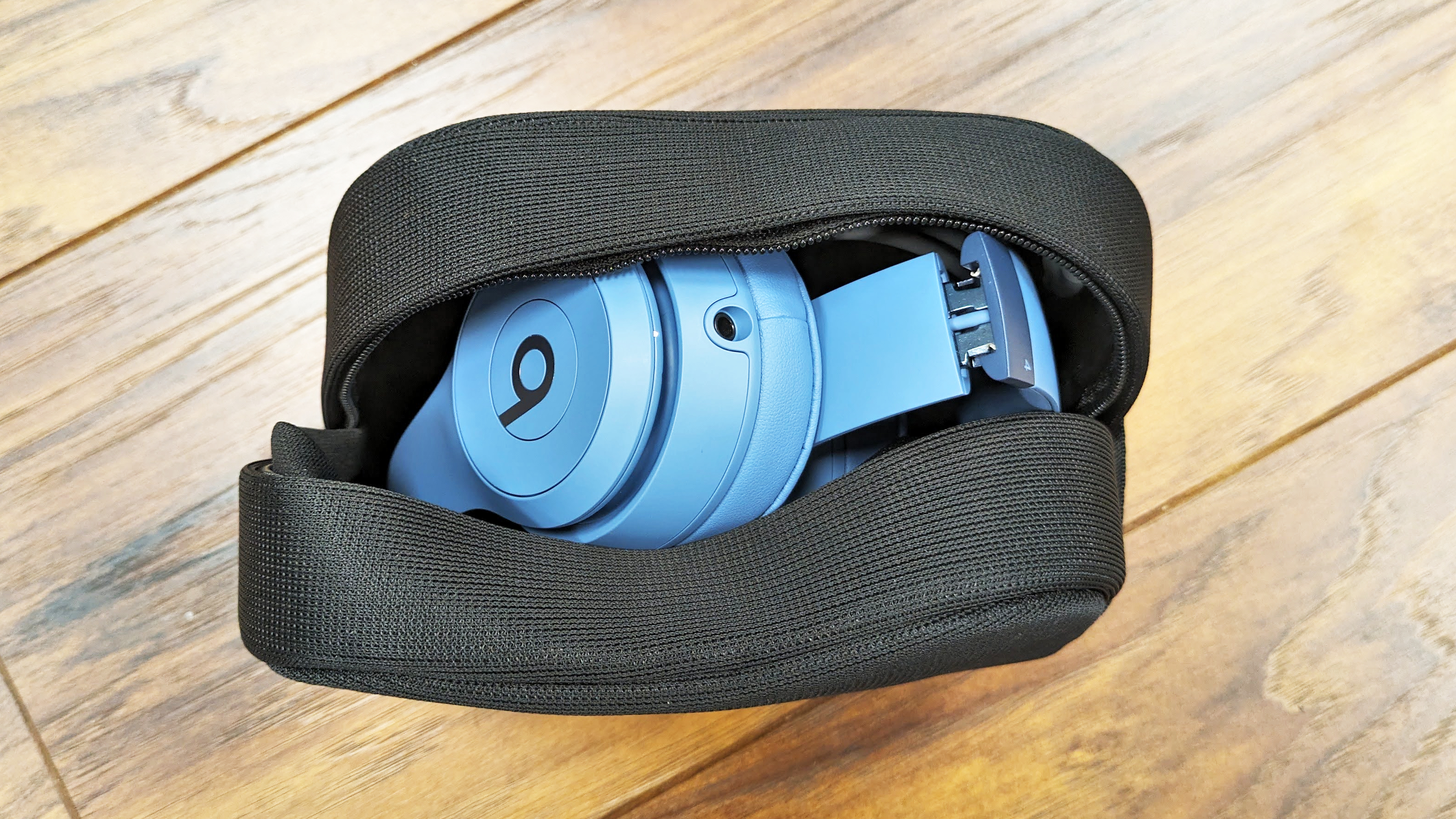
Beats Solo 4 review: Design
- Snug and secure fit
- Uncomfortable for sustained periods
- Nice colors, but limited selection
The case that comes with the Beats Solo 4 is made from a soft fabric material, which makes for a lighter carrying weight. However, it does make me more concerned about their safety when buried at the bottom of a backpack or stuffed in a suitcase than if they had a hard case.
The opening for the case is also quite small, so using it isn’t exactly a seamless experience: it’s near-impossible to take them out without sliding the headband adjustments, and putting back the included 3.5mm analog and USB-C cables in their own pouches within the case is also quite the chore, since the openings for those are very small as well.
And despite being smaller than over-ear headphones, the depth of the case means that they aren't that much smaller to carry around, if at all. The Sony ULT Wear WH-ULT900N over-ear wireless headphones, for instance – which are bigger than the Solo 4 – have a case which is longer and wider, but thinner, which is something I personally prefer, as I find such cases easier to pack away.
The Solo 4 stay true to the Beats aesthetic, looking almost identical to the Solo 3. The look is minimal and the Beats logo is displayed prominently on the sides of each can, so everyone knows what you’re wearing. The Slate Blue finish I had is vibrant without being garish, although Matte Black and Cloud Pink are other color options you can choose from. It's a little disappointing there are only three options, since the Solo 3 came in five colors, but I'm sure more will become available over time.
The adjustments on the headband are smooth and relatively easy to make – although this was trickier while wearing them, as they were fairly tight on me. The hinge mechanisms for folding the earcups feels quite loose, and so doesn’t hold them in folded position with much support. The plastic used for the overall construction doesn’t especially premium either when compared to the likes of Sony and Bose headphones.
The fit is very snug and secure, despite being an on-ear design, and so having less surface area on the pads to grip your head. Having used them for exercise, I can say that they stay on without the slightest deviation. Beats has mentioned exercise as a key use case for the Solo 4, and even in a world of fitness-focused earbuds, they do this job very well.
The price I paid for this secureness, however, was a lack of comfort overall. Despite the particularly plush ear pads, the Solo 4 felt the same as any other pair of on-ear headphones I have tried – which is to say, painful after long sessions. Not everyone feels the same but, if you’re someone with sensitive ears to pressure, like me, then these aren’t going to be the on-ear headphones that change your mind. Glasses wearers will also be in even more potential pain – but again, I will concede this is something I am personally quite sensitive to.
But with the Beats Solo 4, the more universal issue is the feeble headband padding, which meant that the top of my head felt the strain as well. The rubber coating also feels cheap and offers too much grip if anything, often sticking to my hair, causing issues when sliding them on and off.
The upshot is that I couldn’t wear the Solo 4 for more than an hour at a time before I had to give my cranium a break. But when you do take them off and hang them around your neck, I encountered another problem: since the earcups don’t swivel, the edges can rest uncomfortably between the chin and collarbone. It may seem like a small point, but other headphones at this price point do have rotating cups to rectify this problem and make life more comfortable.
- Design score: 3/5
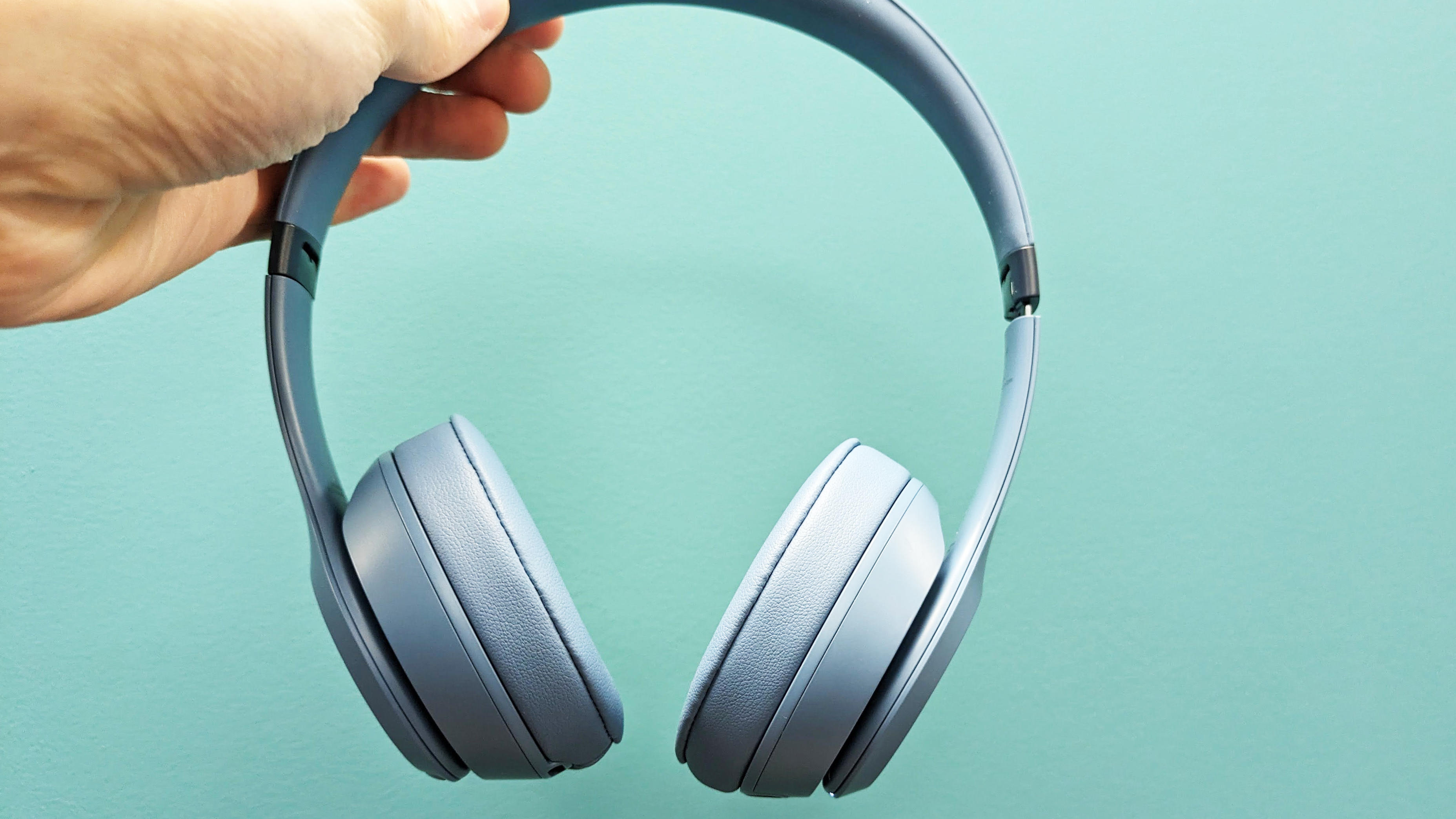
Beats Solo 4 review: Value
- Rivals offer better sound for the same price
- No ANC is disappointing
- Smart features for both Android and iOS is rare
The Beats Solo 4 are priced at $199 / £199 / AU$329, and the competition at this point is quite stiff. The Sony ULT Wear WH-ULT900N, for instance, are currently available for the same price, if not cheaper, and best the Solo 4 in virtually every aspect. I tested them directly against the Solo 4, since we had both in for review at the same time.
The Sony headphones have superior sound and comfort levels, as well as having more features, including ANC. The Beats Solo 4 almost get away with this omission thanks to their frankly excellent natural noise isolating capabilities, but it’s still far perfect, and other headphones at this price point feature ANC too.
In no small part, you'll be paying for the specific styling and the unique mix of Android- and iOS-friendly features. A lot of people will feel that's worth it, but I'm not sure it's quite enough. These features, plus Apple's top-tier Spatial Audio, good battery life and USB-C audio mean they're reasonable for the price overall – but you can spend your money better.
- Value score: 2.5/5
Should I buy the Beats Solo 4?
Buy them if...
Don't buy them if...
Beats Solo 4 review: Also consider
How I tested the Beats Solo 4
- Tested on Android, iPhone and PC
- Streamed music from Tidal and used stored MP3 tracks
- Tested over 10 days
I tested the Beats Solo 4 over the course of a week, in various scenarios. I tried them with an Android phone and an iPhone, as well as a laptop and a Fiio M11S high resolution music player. I made use of all their supported features, including wireless playback via Bluetooth, and wired via 3.5mm analog and USB-C.
I listened to music directly from lowly MP3 files in 320kbps quality, as well as via hi-res streaming service Tidal. I tested them with a variety of genres, including rock, pop, electronic, classical and jazz. I listened both in quiet indoor environments and noisy outdoor ones. I also tried exercising with them to test how secure the fit was.
I also made phone calls and recorded voice memos with the Solo 4 to test the microphone quality too.
I also tested the battery life by leaving the headphones connected to a mobile device via Bluetooth to play through a playlist at a typical listening volume.







